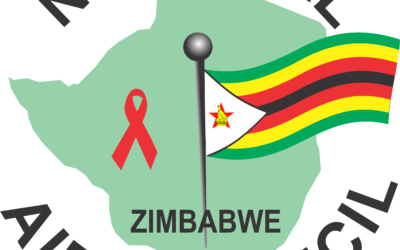
THE 2019 landmark land tenure decision by parties to the UN Convention to Combat Desertification (UNCCD) offers a blueprint for upcoming climate negotiations in Sharm El Sheikh in November.
The recent UNCCD COP15 conference in Abidjan, Ivory Coast, took necessary next steps to guide countries on how to embed land rights within national implementation processes.
As the first of the three Rio Conventions (addressing climate, biodiversity and desertification respectively) to explicitly refer to land tenure as a critical enabler for the transition to more sustainable pathways, results of the meeting could advance the landmark land tenure decision by proposing guidelines to safeguard legitimate land rights.
According to UNCCD’s recently published Global Land Outlook, roughly US$44 trillion of economic output is moderately or highly reliant on natural capital.
Yet this natural resource base is under intense pressure from changing land use patterns and the accelerated impacts of climate change.
This already has huge consequences for the poorest and most vulnerable communities, who depend on natural resources for their survival, and even more, people will be affected as natural capital dwindles.
Current land restoration efforts, such as the global goal of restoring one billion hectares of degraded land or achieving land degradation neutrality by 2030, are seen as offering new opportunities to tackle the impacts of climate change while addressing food security needs, creating livelihood opportunities, especially in rural areas, and countering growing land-based conflicts and migration.
But such initiatives need to account for all existing legitimate tenure rights for Indigenous people, smallholder farmers and pastoralists, women and youth, and other vulnerable groups.
- Chamisa under fire over US$120K donation
- Mavhunga puts DeMbare into Chibuku quarterfinals
- Pension funds bet on Cabora Bassa oilfields
- Councils defy govt fire tender directive
Keep Reading
Otherwise, restoration efforts and especially large-scale investments will lead to new conflicts, violating the rights of people and risking the success of the planned measure.
The UNCCD is the first of three Rio Conventions to explicitly recognise the importance of safeguarding all forms of legitimate land tenure — especially for women, youth, Indigenous communities and smallholder farmers and pastoralists — as a prerequisite for the sustainable management of land and other natural resources.
But with land governance enacted at the national and sub-national levels, how can this progressive decision at the global level translate into a governance environment that promotes good land stewardship by strengthening the land rights of vulnerable groups at the local level?Alexander Müller
Workplace 50/50 — Advancing workplace equality
THE Sexual Reproductive Health and Rights Africa Trust (SAT) is an innovative youth serving organisation that works to empower young people to claim and exercise their right to health. Key to this is gender equality.
Of particular interest is gender equality in the workplace.
Women’s leadership has gained tremendous strides over the years and a growing body of evidence demonstrates a correlation between gender diversity at the executive level and an organisation’s overall performance.
Despite the evidence demonstrating women’s value in the workplace, women continue to encounter structural barriers and experience sexual harassment.
Workplace 50/50 is a programme that seeks to contribute to increased gender equality and increased women’s empowerment in the workplace, thereby contributing to overall organisational strength.
SAT calls for organisations to register and sign up to the Workplace 50/50.
This is a platform that encourages commitment and active planning and implementation of gender equal representation on the board and management as well as matters of remuneration.
COVID-19 has disrupted workplaces and women’s livelihoods have been disproportionately impacted.
SAT encourages organisations to review policies to embrace inclusion and in the context of crises, tackle power and privilege imbalances by committing to Workplace 50/50.
Commitments:
The Workplace 50/50 has the following commitments:
- Commitment 1 — Making public declarations on commitment to gender equality and equity.
- Commitment 2 — Creating equitable governance, management, staffing and remuneration decisions.
- Commitment 3 — Making visible your commitment to gender equality in the external representation of your organisation.
- Commitment 4 — Preventing and responding to sexual abuse, sexual violence and sexual harassment ensuring a survivor-centred approach through organisational policies and codes of conduct.
- Commitment 5 — Addressing gender issues in employee health and wellness.
- Commitment 6 — Supporting gender-responsive and transformative programming, and
- Commitment 7 — Conducting regular gender equality audits and reports on progress.
Signing up to this is a commitment to the organisation’s commitment to gender equality and an affirmation of Sustainable Development Goal 5.SAT
Child labour requires urgent action
THE Global Estimate on Child Labour believes that 160 million children are child labourers worldwide — an increase of 8,4 million children in the last four years — with millions more at risk due to the impacts of COVID-19.
A report, jointly released by the International Labour Organization (ILO) and Unicef in 2021, warned that in sub-Saharan Africa, population growth, recurrent crises, extreme poverty and inadequate social protection measures have led to an additional 16,6 million children into child labour over the past four years.
One of the key findings in the report included the state of the agriculture sector, which accounts for 70% of children in child labour (112 million), followed by 20% in services (31,4 million) and 10% in industry (16,5 million).
The prevalence of child labour in rural areas (14%) is close to three times higher than in urban areas (5%).
Child labour in Africa alone is more than the rest of the world combined. While the majority are in agriculture, other areas are equally very important.
We have a big challenge at hand and Africa needs a lot of strategies to tackle it right away.
Addressing child labour is not a benevolent issue, it is the right of the people in rural communities to have their children in school.
Child labour free zones have provided solutions. For example, the government of Ghana has adopted this method — a child labour free zone and child labour free community and friendly villages.
However, this concept needs more investment to continue making improved participation of communities and structures to address the issue of child labour in the country.
The Commitment to Reducing Inequality Index report shows that the 15 Sadc member States lost about US$80 billion in 2020 due to lower-than-expected growth, which is equivalent to around US$220 for every Sadc citizen.
The analysis estimates that this economic crisis could take more than a decade to reverse, erasing all hope of countries meeting their national development plan targets to reduce poverty and inequality by 2030.
The report says many Sadc member governments are still showing considerable commitment to fighting inequality — but still, nowhere near enough to offset the huge inequality produced by the market and exacerbated by the COVID-19 pandemic.
Among the key messages in the African Economic Outlook 2021 report is that an estimated 51 million people on the continent could fall into poverty.
Today’s non-poor households, maybe tomorrow’s poor households, 50,2% of the people in Africa most vulnerable to staying in poverty live in East Africa.
There is something that we are not doing well, if the number of child labourers is so high, we must change our ways.
By working together, we have begun to see some way forward, but what we have seen is that in the allocation of resources, either not being sent to the right places or when they are not enough, that still remains a big challenge.
We are calling for huge, massive investments in the national plans of the country. We are also calling for a community-based approach — by working with Global March, agricultural unions and their grassroots organisations.
It is important to note that it is not just about the investment, but also about the allocation of the resources, enough money has been invested into fighting child labour, but where does that money go? How is it spent? These are important questions.
More money needs to go into strategies that are working and looking into community development. We have been able to develop systems and strategies. We have been able to chart and map friendly villages and labour free zone, which shows what happens when proper investment is done, it creates the potential for child labour free communities and living.Sania Farooqui










